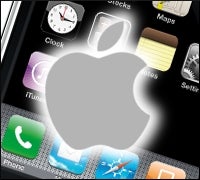 |
UPDATED: In the year-and-a-half since the launch of the iPhone, there have been numerous attempts to deliver a competing “iPhone killer” device. Some of these might even be successful. But for now, it seems the only thing that will beat the current iPhone may be its next-generation successor.
What that might be remains anyone’s guess, but there have been hints along the way that have many Apple observers believing they know the answer.
First off, the question of whether Apple (NASDAQ: AAPL) has a new phone in the works seems to have an obvious answer, with June or July as a logical target date for such a release: At that point, iPhone
1.0 users will begin coming off their two-year contracts with AT&T and be ready to renew. The timing also could fit with the next Apple Worldwide Developer Conference if it’s in June as the past two have been.
“We definitely believe it’s due for a June/July refresh,” Ben Bajarin, an analyst with Creative Strategies, told InternetNews.com. “That tends to be sticking to their usual cycle of an iPhone/iPod release in June/July and a Mac update in August/September. That was one of the reasons for pulling out of Macworld — the dates didn’t fit with their timelines.”
Releasing a new iPhone this summer would also make sense from a competitive standpoint. By then, Palm is due to have shipped its flashy Pre smartphone, a device that got a lot of buzz after its preview at the January Consumer Electronics Show.
Apple also dropped a hint of a new phone in the release of its latest iPhone firmware code, version 2.2.1.
MacRumors posted a note from someone digging around in code who found a reference to an “iPhone 2,1.” The original iPhone was referenced as “1,1” and the iPhone 3G as “1,2.”
Apple did not return calls seeking comment. The company doesn’t typically comment on future product plans.
As to what a next-generation iPhone would contain, the speculation goes off the charts. For months there had been talk of an “iPhone Nano,” a smaller version of the device. But Tim Cook, chief operating officer and Apple’s leader during CEO Steve Jobs’s health-related leave of absence, ended that speculation during the most recent quarter’s conference call.
“You know us — we’re not going to play in the low-end voice phone business. That’s not who we are,” he said during the call. “That’s not why we’re here. We’ll let somebody do that. Our goal is not to be the unit share leader in the phone industry. It is to build the best phone.”
Page 2: Moving up the food chain
Page 2 of 2
Moving up the food chain
So now, all the speculation has shifted to a higher-end phone than Apple’s current offering. With iPhone contracts ending shortly, customers will likely want more than just incremental updates — not just a few new features but a big jump from the original phone, Bajarin said. Changes to the architecture could enable features iPhone fans have been asking for, such as the ability to run applications in the background and to play Flash animations.
The question is what Apple will add, and how it plans to achieve it. One rumor came courtesy of a research note from Doug Freedman, analyst with AmTech, the market research firm previously called American Technology Research. He suggested Apple is working on an iPhone using nVidia’s Tegra chip.
That would make for strange bedfellows, as Microsoft is also rumored to be planning a phone based on Tegra. nVidia (NASDAQ: NVDA) launched Tegra in June 2008 as a high-performance competitor to embedded processors like the ARM processor Apple uses in the iPhone. The Tegra 650 can support 1080p HD output using the high-def H.264 codec. The company would not comment on Freedman’s paper or rumors of Tegra in the iPhone.
Bajarin doesn’t buy it, however. Apple spent a tidy sum of money to acquire P.A. Semiconductor, and in December invested $5 million in Imagination, a British semiconductor maker of mobile phone chips. Ultimately, he believes Apple wants to bring chip development in-house and lessen its dependence on outside developers, which would be in keeping with Apple’s closed nature.
“I would expect them to demonstrate the benefits of the P.A. Semi acquisition soon,” Bajarin said, adding that former P.A. Semi CEO Dan Dobberpuhl, who was the lead designer for the DEC Alpha and StrongARM processors, has a history of taking architectures and making them better, and the ARM license permits customization of the processor.
“That’s the beauty of the ARM license. You can license it and do what you want with it. [Apple] can make it better because they have the engineering talent to do so,” Bajarin said. “Apple is not jumping to a new processor — they are using the architecture knowledge of P.A. Semi to license an ARM chip and customize it their own way.”
Updated to clarify likely timing of Apple’s Worldwide Developer’s Conference.


